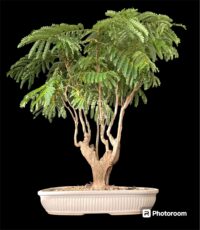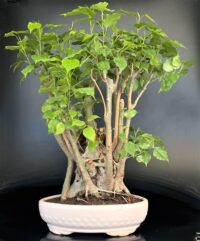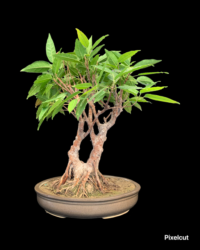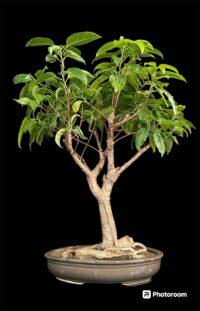heavy rainfall bonsai care tips
Introduction to heavy rainfall bonsai care tips.
Its Monsoon season again in 2023 and this year the rains are playing havoc every where. here are some heavy rainfall bonsai care tips by Delhi Bonsai. You could use them to protect your bonsais.
This year 2023 its being Raining heavily in Delhi and surrounding areas. July 2023 being wettest month in last 30 years time. The weather is cloudy, misty and sun does not show up at all for weeks together. This type of weather conditions combined with inconstant rains is harmful for your Bonsais.
Effect of Heavy Rainfall on your Bonsais.
Though the effect of Heavy rains had earlier been discussed in my earlier article, but here we will particularly focus on the inconsistent rains combined with humid and misty weather with no sun light for weeks all together.
Rain water is considered to be health and nourishing for your bonsai plants. It infuses the much needed nitrogen and maintain oxygen levels in the soil.
Problems in Bonsais.
- Water accumulation in bonsais. (Standing Water)
- Clogging of Bonsai pots and its drainage holes.
- Falling of Bonsais.
- Loosing of Bonsais in bonsai pots.
- Soil erosion.
- Fungal infection
- Rotting of Roots.
- Breaking of Branches.
- Insect attack
- Leaf yellowing.
A short period of over-watering, say 1-2 weeks, does not damage a bonsai; therefore heavy rain during this spell will not kill it. Heavy overwatering, however, can be quite damaging as stated above.
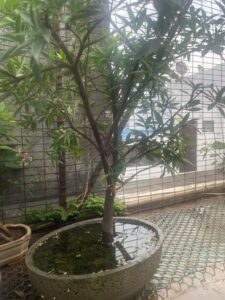
Bonsai Plants Resistant to water logging.
- Banyan
- Pilkhan
- Bodhivriksha
- Kalpvriksha
- Ficus Varieties
- Cycus
- Boxwood
Bonsai Plants effected to water logging.
- Jade
- Babool
- Jungle Jalebi
- Juniper
- Pine
- Gensing
Many imported plants you buy online or otherwise are planted solely in cocopeat. Such Bonsais are most likely to die due to root rot or malnutrition.
Featured Plants
Buy Heavy Rainfall Sustaining Bonsai
Our Motto
What you see is what you get
Delivery
Personalised delivery at door step
Mission
Creating green spaces
When it comes to caring for bonsai trees during heavy rainfall, there are a few important considerations to keep in mind. Here are some tips to help you protect and maintain your bonsai during rainy periods:
Drainage: Ensure that your bonsai pot has sufficient drainage holes to allow excess water to escape. Good drainage is crucial to prevent waterlogging, which can lead to root rot and other issues. If your bonsai pot doesn’t have enough drainage, consider repotting it into a container with better drainage.
Soil Selection: Use a well-draining bonsai soil mix that allows water to pass through easily. Avoid using regular garden soil or heavy clay, as they retain water for longer periods. A well-draining soil mix will prevent water from pooling around the roots.
Shelter: If heavy rainfall is expected, consider moving your bonsai to a sheltered location. This could be a covered porch, a greenhouse, or any area where the tree is protected from excessive rain. However, ensure the tree still receives adequate light and airflow.
Elevation: Raise your bonsai pot slightly off the ground or the surface it’s resting on using feet or blocks. Elevating the pot allows water to drain more effectively and reduces the chances of water accumulating around the base of the tree.
Pruning and Canopy Maintenance: Regularly prune your bonsai to maintain a well-balanced and open canopy. This helps to reduce the risk of water pooling on the foliage, which can lead to fungal diseases. Remove any dead or damaged branches, as they can become susceptible to rot in wet conditions.
Fertilization Adjustments: During heavy rainfall, nutrients in the soil can be leached out more rapidly. Consider adjusting your fertilization schedule to compensate for this. Use a balanced bonsai fertilizer and follow the instructions for application rates based on the specific tree species.
Monitor Watering: While heavy rainfall provides moisture for your bonsai, it’s important to keep an eye on the soil’s moisture levels. Excessive rain can oversaturate the soil, so you may need to adjust your watering schedule accordingly. Use a moisture meter or check the soil’s moisture level by inserting your finger into the soil up to the first knuckle. Only water if the soil feels dry at that depth.
Disease Prevention: Keep an eye out for signs of fungal or bacterial diseases, especially in damp conditions. Ensure good airflow around the tree and avoid overcrowding your bonsai with other plants, as this can lead to increased humidity and disease susceptibility.
By following these tips, you can help protect your bonsai tree during heavy rainfall and maintain its health and beauty. Remember, different species of bonsai may have specific care requirements, so it’s essential to research and understand the needs of your particular tree.
Watch heavy rainfall bonsai care by Delhi Bonsai Studios.
- Introduction to heavy rainfall bonsai care
- Selecting the right bonsai tree for heavy rainfall conditions
- Watering techniques for heavy rainfall bonsai care
- Drainage considerations for heavy rainfall bonsai care
- Protecting bonsai trees from heavy rainfall
- Soil selection and composition for heavy rainfall bonsai care
- Fertilization and nutrient management for heavy rainfall bonsai care
- Pruning and shaping techniques for heavy rainfall bonsai care
- Pest and disease control for heavy rainfall bonsai care
- Seasonal care tips for heavy rainfall bonsai trees
- Tips for beginners in heavy rainfall bonsai care
- Showcasing successful heavy rainfall bonsai trees
- Conclusion
- FAQs
Watch Heavy Rainfall Bonsai Care by Delhi Bonsai Studios
Bonsai trees are a true testament to the harmony between nature and artistic expression. Their miniature size and intricate shapes captivate enthusiasts worldwide. If you reside in an area that experiences heavy rainfall, it is essential to understand the specific care requirements for your bonsai trees. In this article, Delhi Bonsai Studios will provide you with valuable insights and tips on how to care for bonsai trees in heavy rainfall conditions.
1. Introduction to Heavy Rainfall Bonsai Care
Heavy rainfall poses unique challenges to bonsai tree care. Excessive water can lead to root rot, fungal infections, and nutrient leaching. Therefore, it is crucial to adopt suitable techniques and strategies to maintain the health and vitality of your bonsai trees in such conditions.
2. Selecting the Right Bonsai Tree for Heavy Rainfall Conditions
Not all bonsai trees are equally suited for heavy rainfall environments. Some species are more tolerant of excessive moisture, while others may struggle to thrive. Delhi Bonsai Studios recommends selecting tree varieties like Japanese Maple, Trident Maple, and Bald Cypress, known for their adaptability to heavy rainfall.
3. Watering Techniques for Heavy Rainfall Bonsai Care
While heavy rainfall provides natural watering for your bonsai tree, it is still essential to monitor moisture levels and adjust your watering routine accordingly. Delhi Bonsai Studios advises using a well-draining soil mixture and ensuring that excess water can freely escape through drainage holes.
4. Drainage Considerations for Heavy Rainfall Bonsai Care
Good drainage is vital for bonsai trees in heavy rainfall areas. Properly designed bonsai pots with sufficient drainage holes and a layer of drainage material at the bottom facilitate efficient water flow, reducing the risk of waterlogged roots.
5. Protecting Bonsai Trees from Heavy Rainfall
To shield your bonsai trees from the adverse effects of heavy rainfall, Delhi Bonsai Studios recommends employing various protective measures. These include providing overhead coverings, using windbreaks, and utilizing temporary shelters during particularly intense rainstorms.
6. Soil Selection and Composition for Heavy Rainfall Bonsai Care
The right soil composition plays a crucial role in heavy rainfall bonsai care. A well-draining soil mix that retains sufficient moisture while allowing excess water to escape is essential. Delhi Bonsai Studios suggests a blend of Akadama, pumice, and lava rock to create an optimal growing medium for your bonsai trees.
7. Fertilization and Nutrient Management for Heavy Rainfall Bonsai Care
Heavy rainfall can wash away essential nutrients from the soil, affecting the overall health of your bonsai tree. Regular fertilization is vital to replenish these nutrients. Delhi Bonsai Studios recommends using organic slow-release fertilizers during the growing season and adjusting the frequency based on rainfall patterns.
8. Pruning and Shaping Techniques for Heavy Rainfall Bonsai Care
Pruning and shaping are integral aspects of bonsai care, even in heavy rainfall conditions. Delhi Bonsai Studios advises pruning for proper airflow, removing damaged or weak branches, and promoting desired growth patterns. It is important to strike a balance between maintaining the tree’s form and preventing excessive foliage density.
9. Pest and Disease Control for Heavy Rainfall Bonsai Care
Heavy rainfall can create favorable conditions for pests and diseases to thrive. Regular inspection, preventive measures, and timely intervention are essential to protect your bonsai trees. Delhi Bonsai Studios recommends using organic pest control methods and maintaining a clean growing environment.
10. Seasonal Care Tips for Heavy Rainfall Bonsai Trees
Each season requires specific care considerations for bonsai trees in heavy rainfall areas. Delhi Bonsai Studios provides detailed guidelines on adjusting watering routines, protecting against temperature extremes, and promoting healthy growth throughout the year.
11. Tips for Beginners in Heavy Rainfall Bonsai Care
If you are new to heavy rainfall bonsai care, Delhi Bonsai Studios offers valuable tips to help you get started. From selecting the right tree species to understanding basic care principles, these insights will set you on the path to success in cultivating bonsai trees.
12. Showcasing Successful Heavy Rainfall Bonsai Trees
Delhi Bonsai Studios takes pride in showcasing the exceptional bonsai trees that thrive in heavy rainfall conditions. Through photographs and stories, you can gain inspiration and learn from the experiences of other bonsai enthusiasts.
